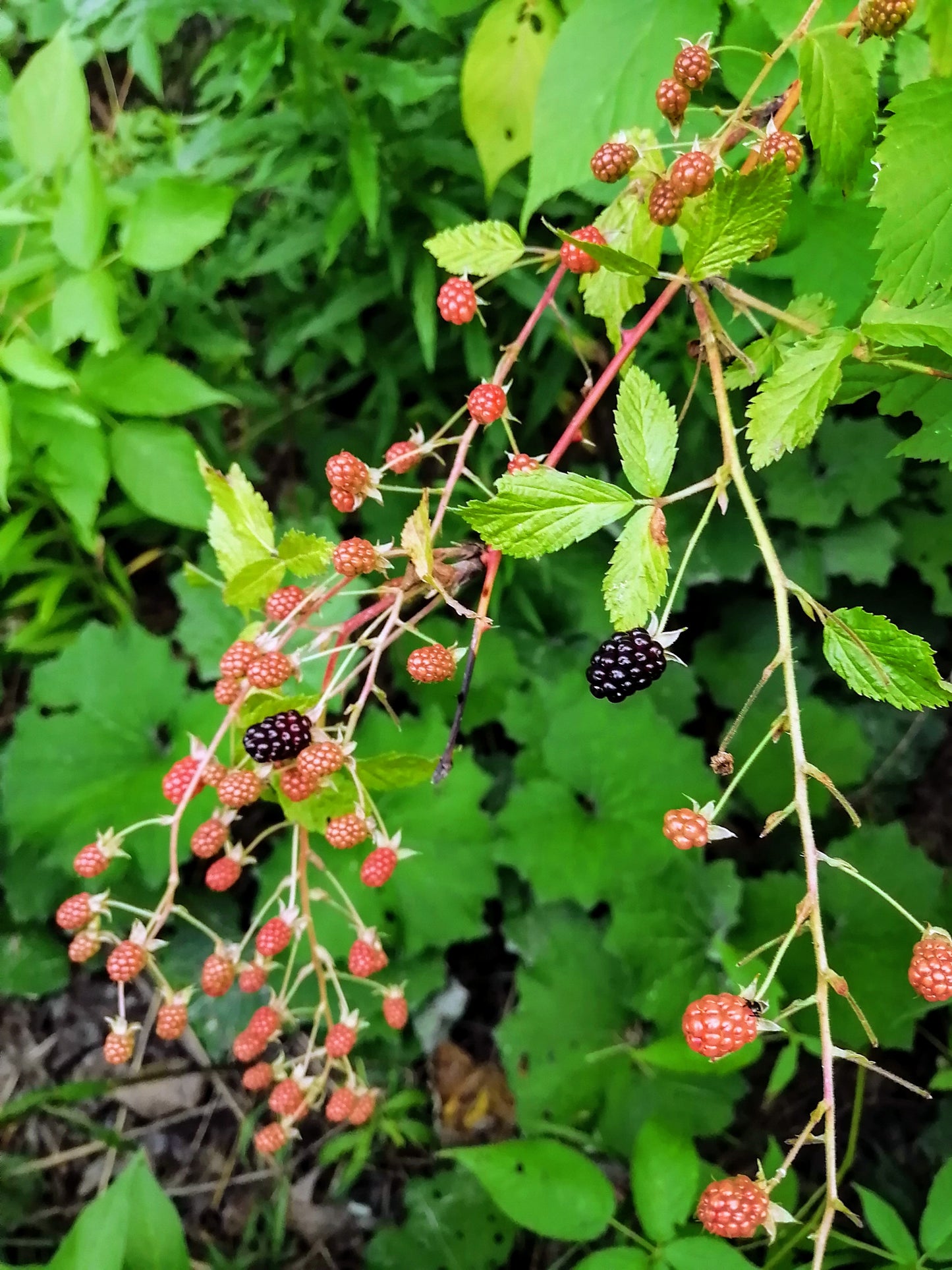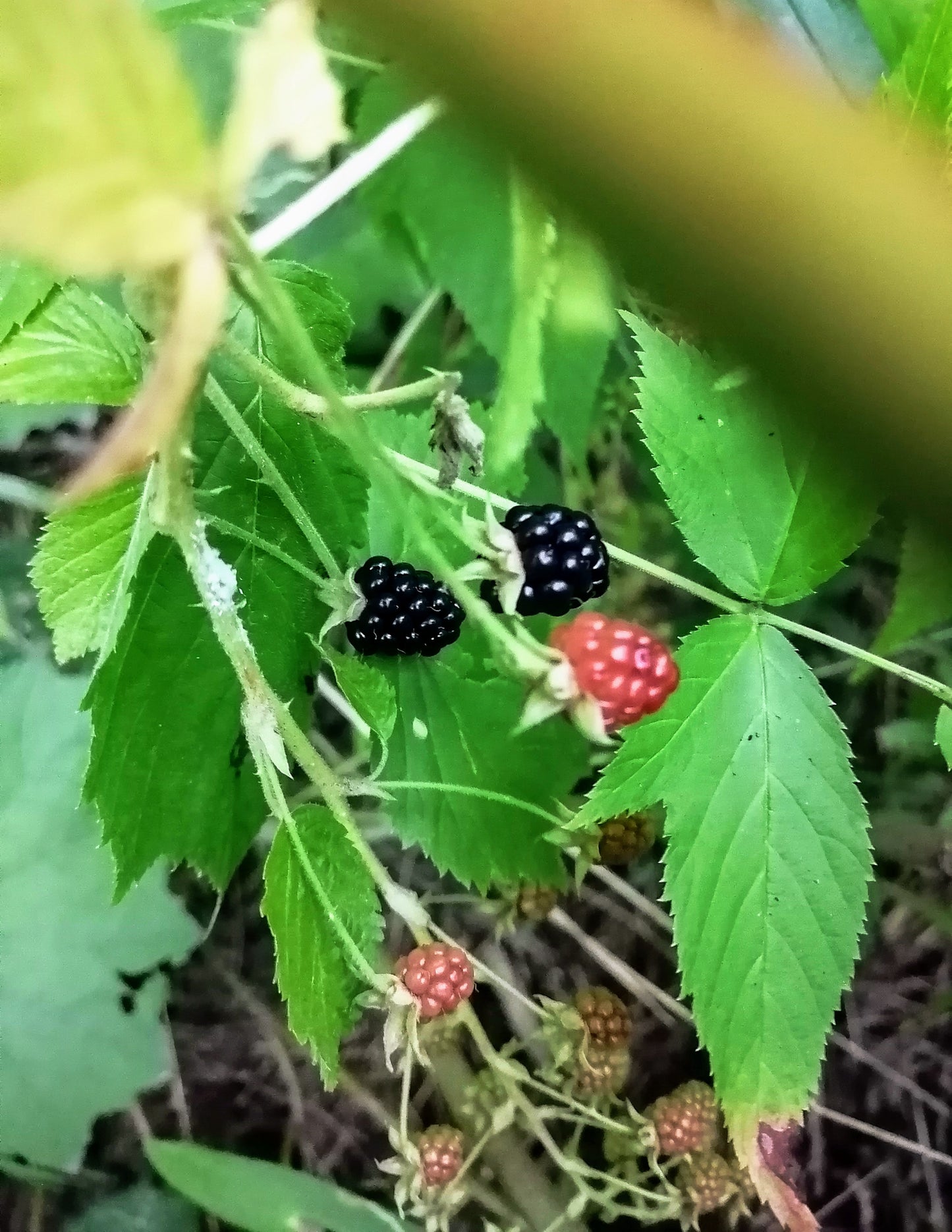Hundredfold Canada
Common Blackberry Seeds (20) – Rubus allegheniensis Native Shrub, Edible Berries & Wildlife Value | Hundredfold
Common Blackberry Seeds (20) – Rubus allegheniensis Native Shrub, Edible Berries & Wildlife Value | Hundredfold
Impossible de charger la disponibilité du service de retrait
Allegheny Blackberry (Rubus allegheniensis) – Key Features
-
Native Range: Eastern Canada & USA; thrives in forests, woodlands, meadows, and grassy balds.
-
Growth Habit: Multi-stemmed shrub with arching red-purple canes lined with prickles; often forms loose colonies.
-
Flower & Fruit: White blooms in late spring to early summer; followed by thimble-shaped blackberries in summer.
-
Wildlife Value:
-
Fruits feed birds, mammals, and people.
-
Dense thickets provide year-round shelter.
-
Hollow stems support nesting native bees.
-
-
Growing Conditions: Adapts to full sun or light shade; fertile loam, clay, or rocky soils; vigorous and hardy with minimal pest or disease issues.
-
Best Uses: Edible gardens, pollinator plantings, naturalized areas, or wildlife habitat restoration.
Hundredfold Notes:
Allegheny Blackberry is more than a fruiting shrub — it is a keystone native plant that supports pollinators, birds, and mammals while helping to stabilize ecosystems.
By contrast, Himalayan blackberry (Rubus armeniacus) has become a destructive invasive species in British Columbia’s coastal regions. If left unchecked, it could threaten eastern Canadian woodlands as well. One way to prevent this is to strengthen native ecosystems by planting our own eastern blackberry, Rubus allegheniensis.
I only have a small number of these seeds available — it would not turn the tide of invasive, but planting native may at least rebuild some habitats and safeguard eastern landscapes for the future.
Share



